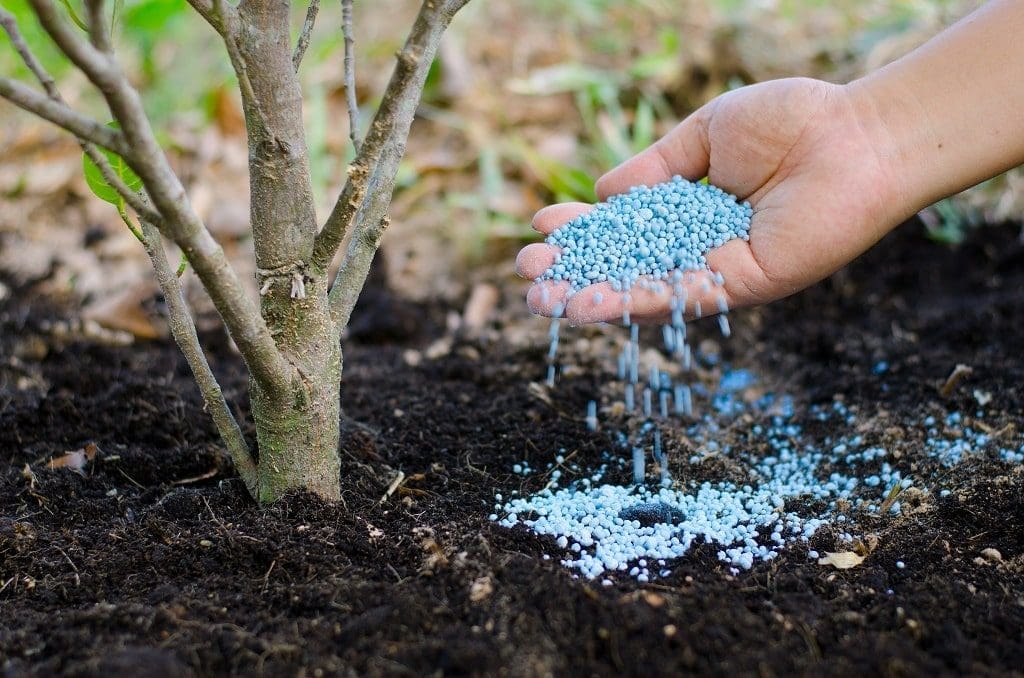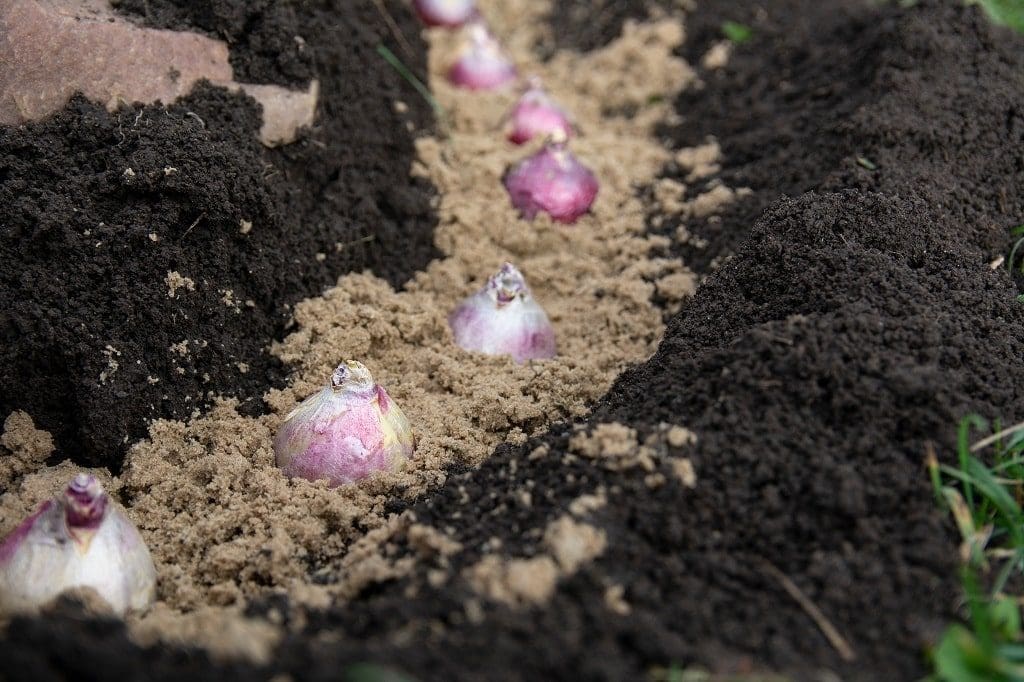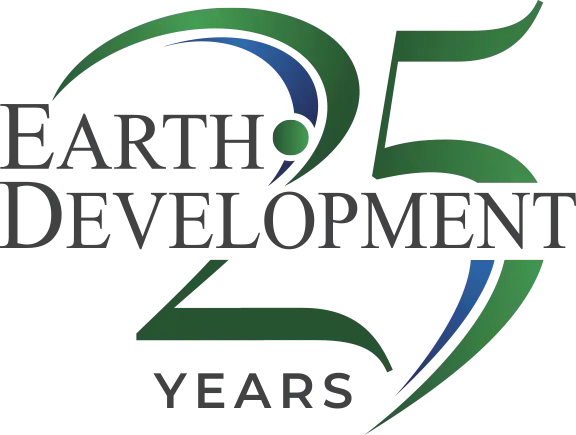Cool-season grasses, which are most common in Minnesota and the Midwest, require fall fertilization to ensure healthy growth. But what fertilizer do you need, and when exactly should it be applied?
This fall in Minneapolis, St. Paul choose the right fall fertilizer for trees, lawns, and shrubs with the advice of Earth Development’s local lawn maintenance professionals.
Why You Should Fertilize in The Fall
Late fall fertilization offers a host of benefits to your grass, ensuring that the grass uses up the resources and food you provide at a time when it is growing most actively. It’s a way of ensuring that your cool-season grass grows well into the early winter, helping prevent the development of disease in the winter and ensuring it is fit to survive the cold weather until the next spring.
Fall fertilization also helps enhance the spring green-up process, meaning your grass will be healthier and more prepared for the summer months. Remember that the green-up period often lasts until the mid-spring, so you won’t need to perform early spring fertilization at all.
Not only that, but late fall fertilization helps increase rooting. There remains some debate about how this process works, but it’s known that fall fertilization helps establish stronger and deeper roots. Studies have even shown that applying moderate quantities of soluble nitrogen in the late fall period helps increase the rooting of turfgrass, and even increases shoot growth.
Remember that the key to fertilization is ensuring that your lawn, plants, or trees have access to sufficient quantities of fertilizer and nutrients at a time when they are actively growing. If your lawn or plants are growing in the late fall, then late fall fertilization ensures that those nutrients are there and that the plants are prepared for the harsh winter months.
In the Midwest, most people use cool-season grass, meaning fall fertilizer is always smart.
When To Apply Fall Fertilizer

So, we know that fertilizing in the fall is important – but how do you choose the right time?
For property owners with lawns in Minnesota and the rest of the Midwest, it’s important to remember that your cool-season grass needs to be fertilized in the early fall or the late fall. Not only that, but you’ll need to choose the right weather conditions.
Ideally, the final fertilizer applications should be done in mid-November. This is the time when the grass no longer grows and will not need to be grown again. You should also ensure that the ground is wet, so try and choose the day after a rainfall – but be sure not to apply during the rain or when you expect rain, as it may wash the fertilizer away before it’s had a chance to fully sink into the soil.
How To Choose the Best Fall Fertilizer?
Now we have the question: what is the best fertilizer for grass in the fall?
There are a lot of important things to remember here, and we’ll start with the basic fertilizer “formula.” This formula is represented with three numbers, with perhaps the most common being “5-10-5.”
The first number in the formula represents nitrogen, which helps with the growth of foliage and blades of grass. The second number refers to phosphorus, which helps with the growth of roots. Finally, the third number represents potassium, which helps with cell function and the ability of a plant to absorb trace elements.
It’s wise to choose a fertilizer that has a high ratio of potassium and nitrogen. This is essential for allowing grass or plants to root well, withstand the cold, and resist disease. Ideally, a fall fertilizer will have a ratio of 24-4-12, including isobutylene diurea (IBDU). This ideal fall formulation makes nitrogen immediately available to the plant, while the rest of the formula is slow-release – meaning that the compounds slowly break down and provide nutrients to the grass over a longer period.
One thing to be aware of, though, is finding a fertilizer that has too much phosphorus. With too much phosphorus, rain can wash it away and it will eventually find its way into rivers and streams, causing pollution and environmental damage.
Follow this formula and you’ll be sure to give your lawn the nutrients it needs, but if you need additional help, we absolutely advise you to contact the Earth Development team!
Fall Fertilizer For Trees And Shrubs

It’s not just your lawn that can benefit from fall fertilizer! Fertilizing trees is also an important part of maintaining your outdoor space, and that’s also an area of expertise for Earth Development.
Use a slow-release nitrogen fertilizer in late October for your trees. You’ll find that the excess nutrients in these formulas are stored in the roots, which can then be used in the spring when the tree starts growing again.
The vascular structure of the tree roots remains active during the winter, even when growth on the top of the tree has stopped – so don’t think that fertilizing in the winter won’t be helpful. It is!
Be cautious when it comes to application, however, as it’s absolutely possible to go overboard and apply too much. Testing the soil is a good way to know whether your trees need fertilizer or an expert from Earth Development can provide a full assessment of your trees and soil to determine whether fertilizer is necessary.
Fall Fertilizer For Lawn
We’ve already talked about fertilizing your lawn, but we should also cover the kind of fertilizer that is best used when trying to revive a dying lawn. A formula of 20-8-8 is a good step if your lawn looks tired and brown. There are many brands of fertilizer out there, so be sure to follow the instructions on the side of the bag – no matter what kind you choose.
Early fall fertilization is important, and don’t forget about providing another application of fertilizer in early to mid-November. This second application should follow a 13-25-12 formula, providing an additional dose of phosphorus that helps stimulate root growth right into December. The stronger your roots are by the time winter rolls around, the better your grass will fare over the winter months.
Fall Fertilizer For Bulbs

Fall is also the season to start planting your bulbs. Waiting until spring is much too late!
When planting bulbs, make sure that the soil is fertilized with a good quantity of phosphate, which will help stimulate root growth and make flowering in the spring much easier for the new plants.
The key to fertilization is root growth, so whatever you can do to make the soil healthy, nutrient-rich, and disease-free in the fall months is important.
Trust the Midwest’s Commercial Landscaping Professionals
At Earth Development, we provide commercial property owners with the most comprehensive and reliable commercial landscaping service around. Our commercial lawn fertilizing services are an essential part of that – and if you’re looking for help maintaining your lawn this year or next, why not give our team a call?
